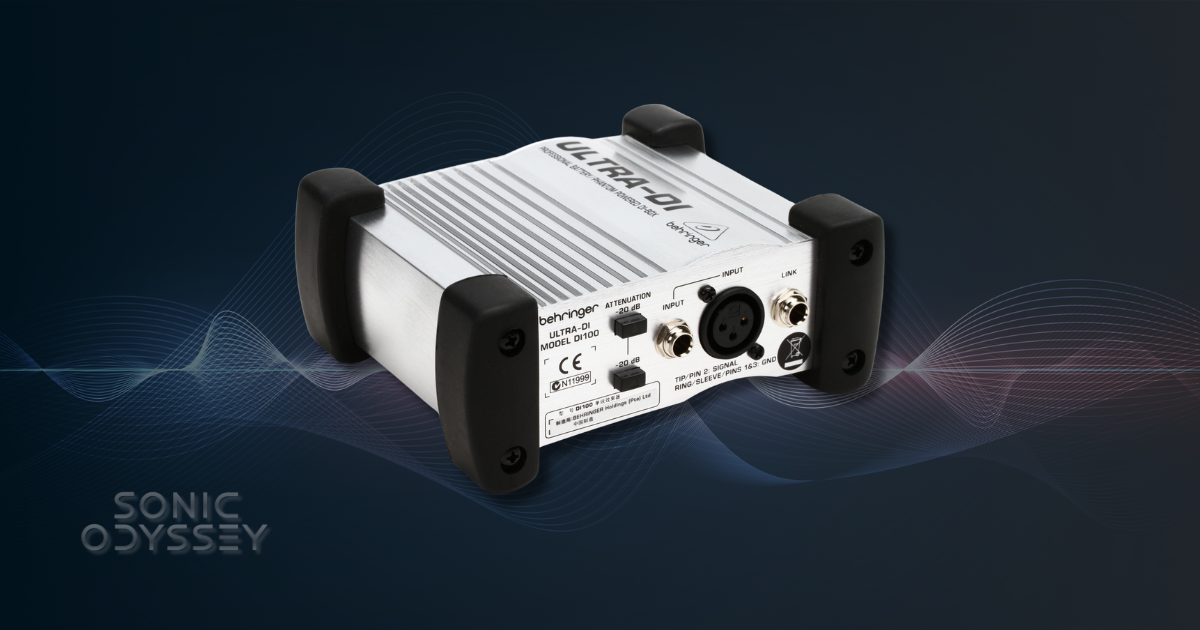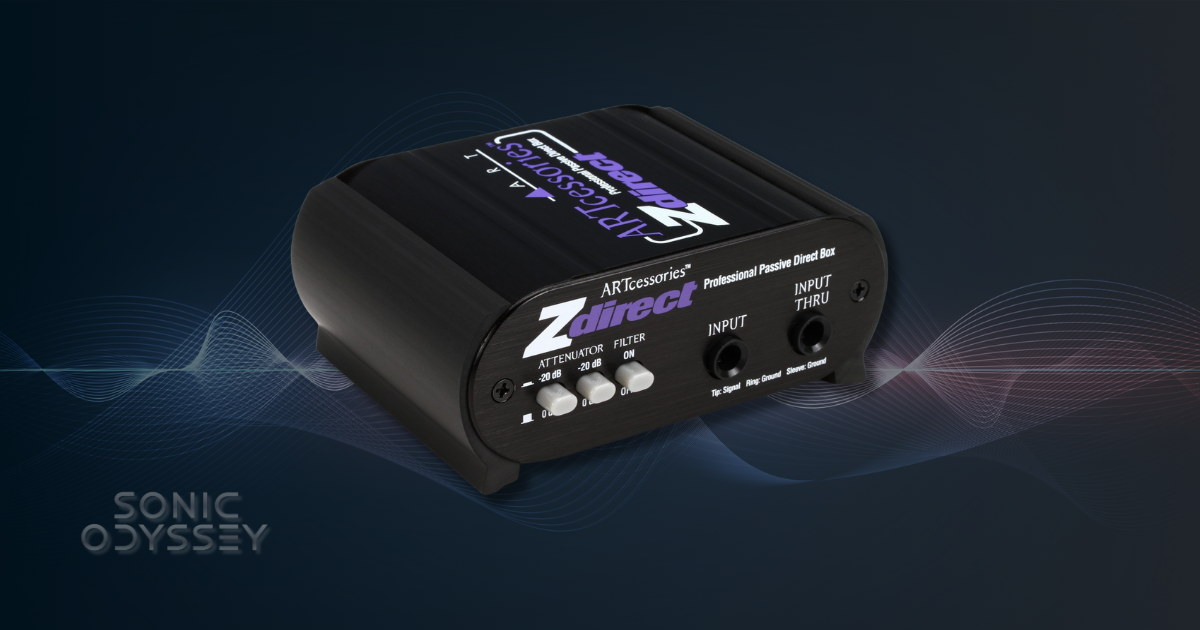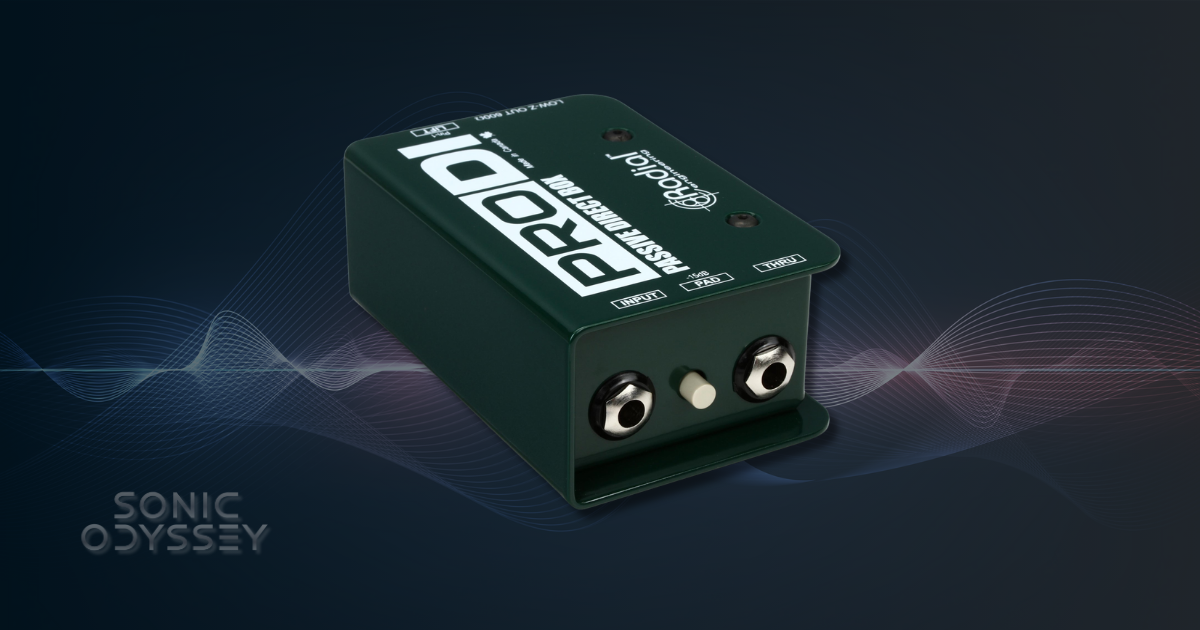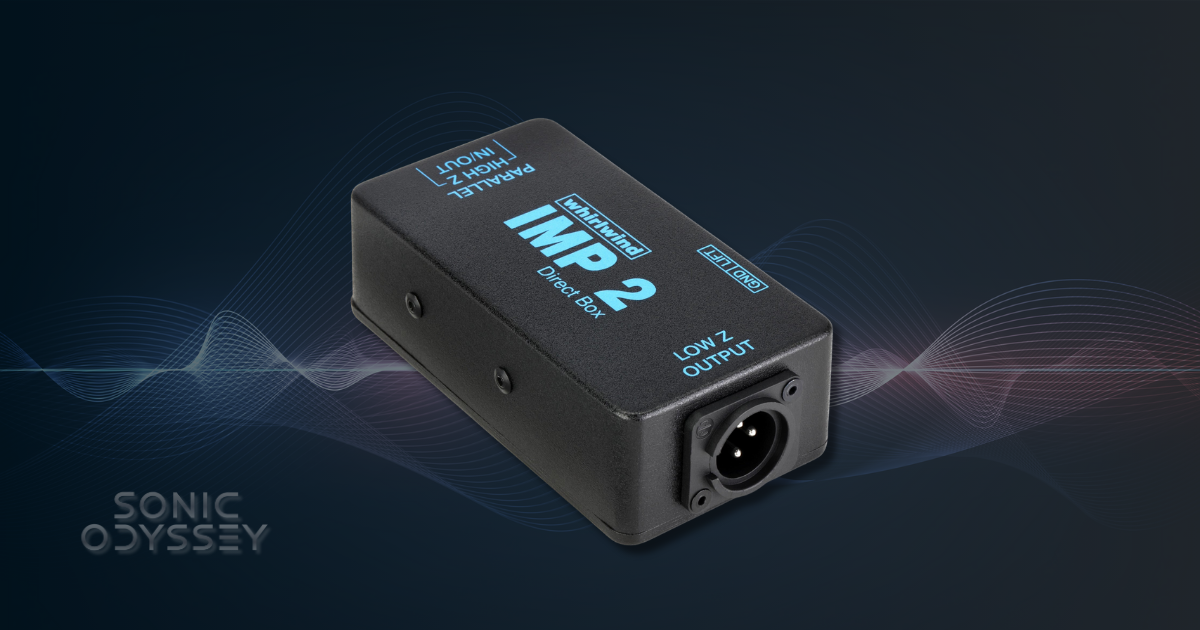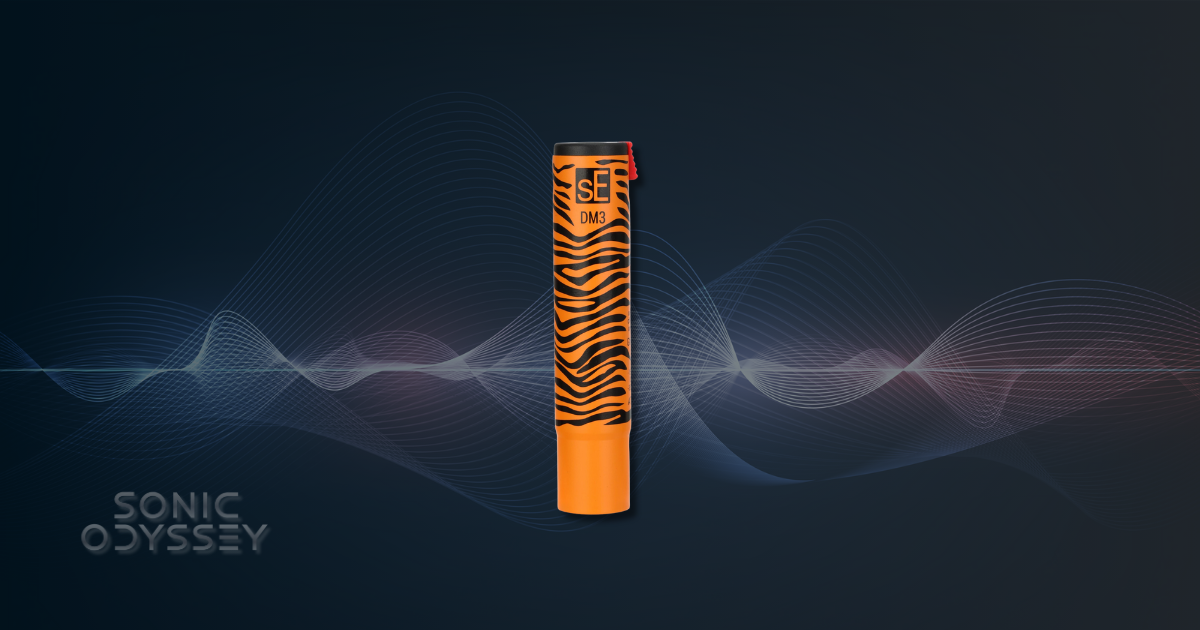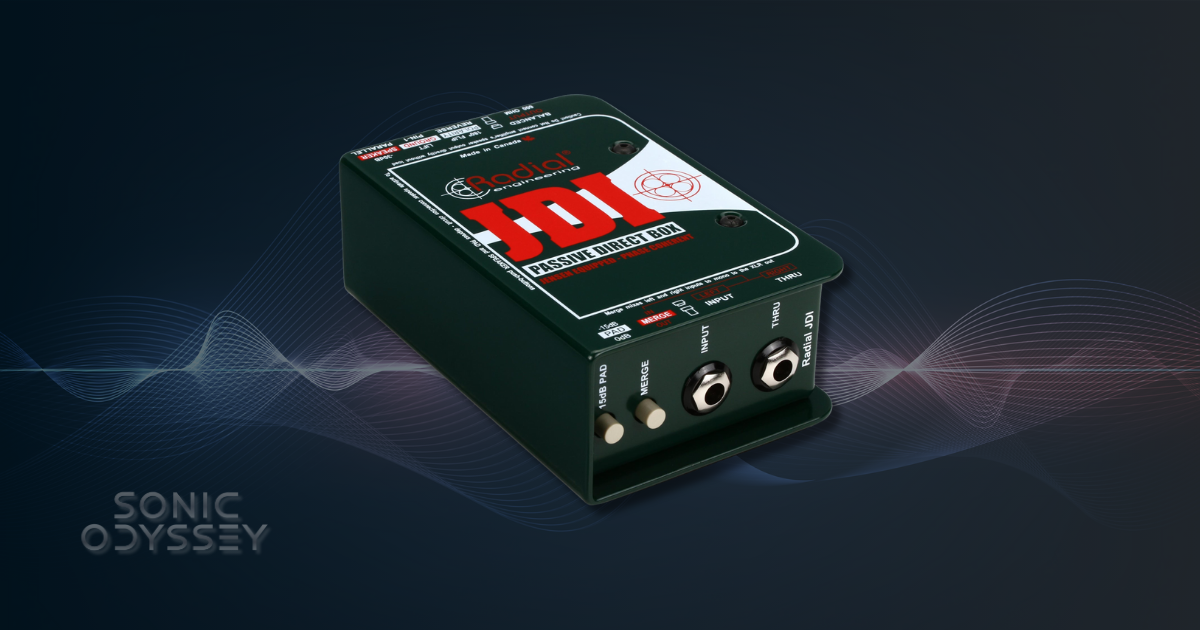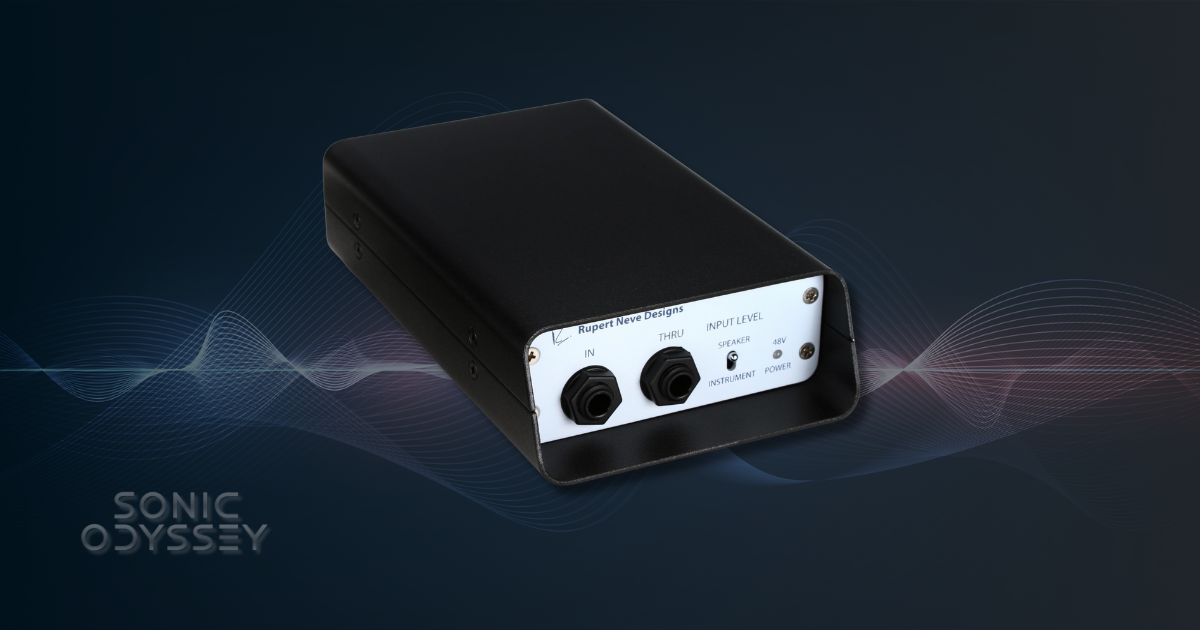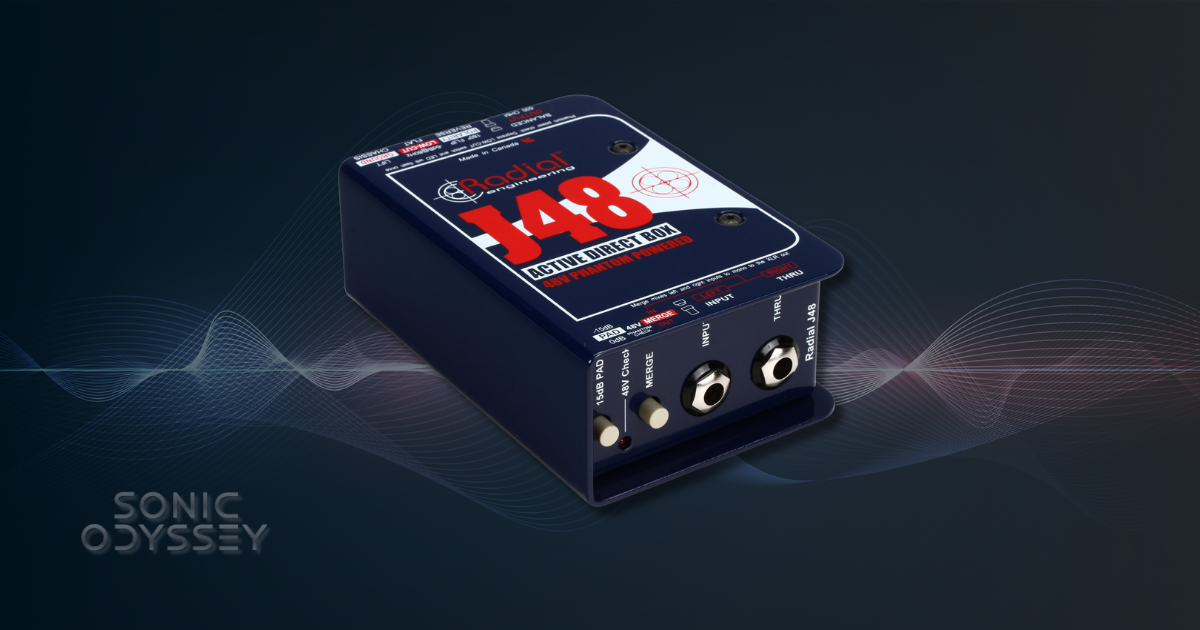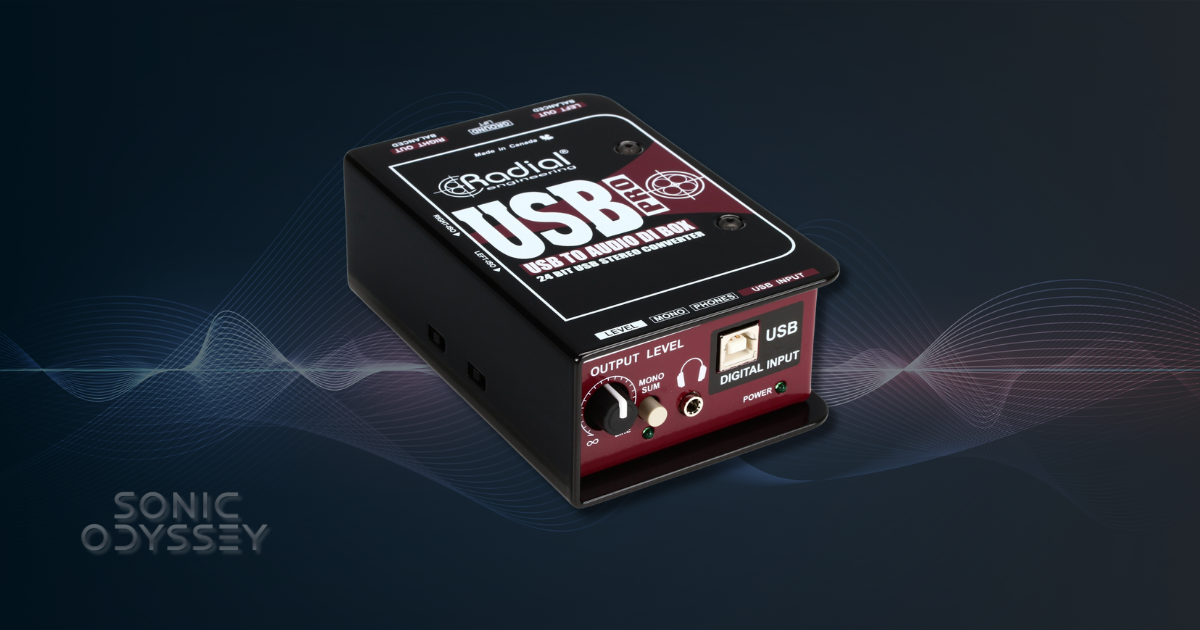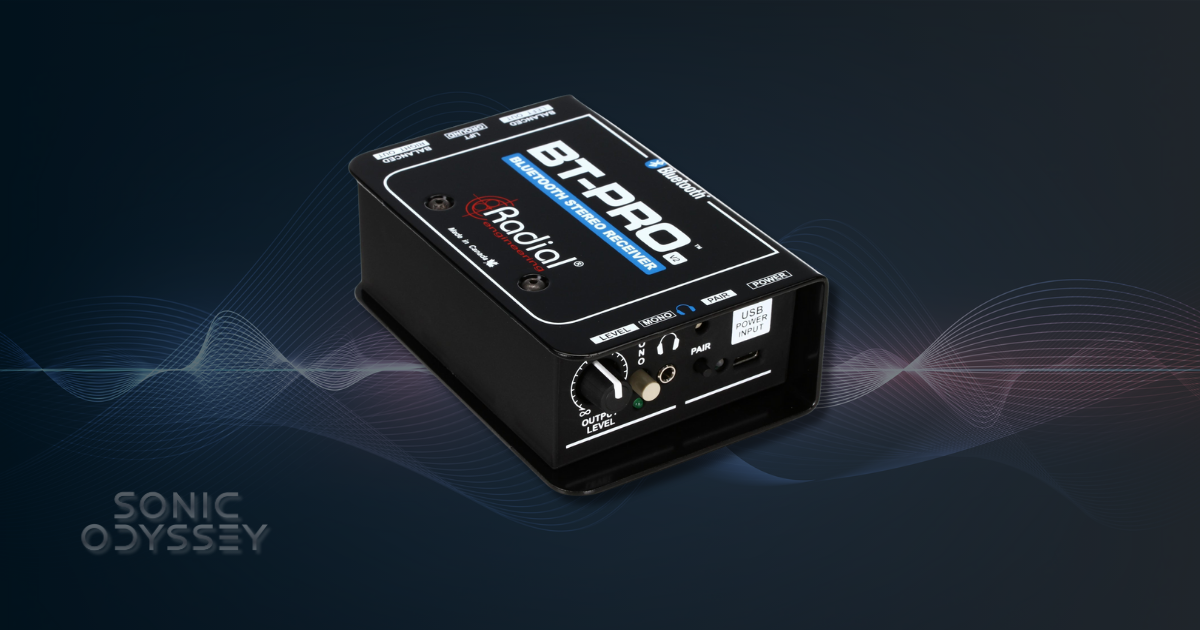Affiliate Disclosure: Some links in this article may be affiliate links. If you purchase through them, Sonic Odyssey may earn a small commission at no extra cost to you. Thank you for supporting the site.
Before you pull the trigger on any new gear, check out our exclusive plugin deals — updated weekly with the best discounts on mixing, mastering, and creative tools from top developers.
Recommended Reading
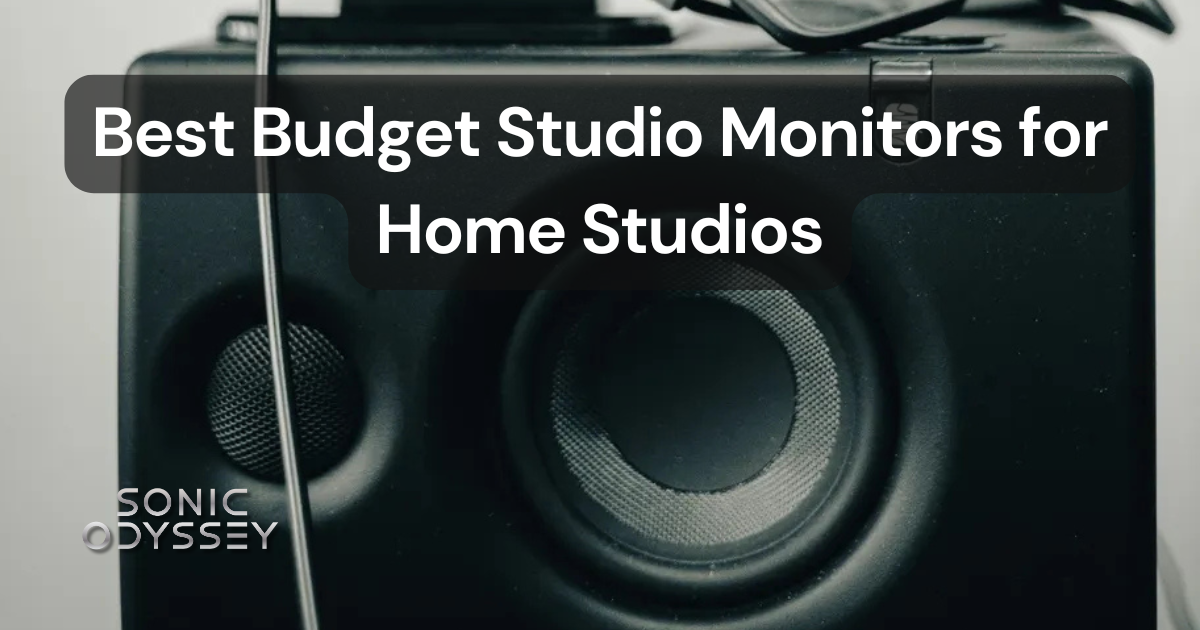
These monitors are honest enough to hurt your feelings (in a good way).
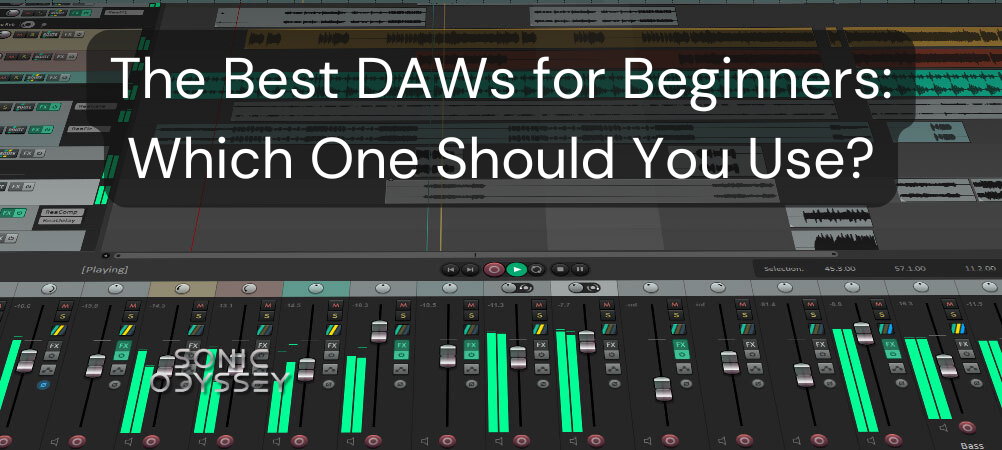
Your first DAW doesn’t have to be overwhelming — this will help you pick confidently.
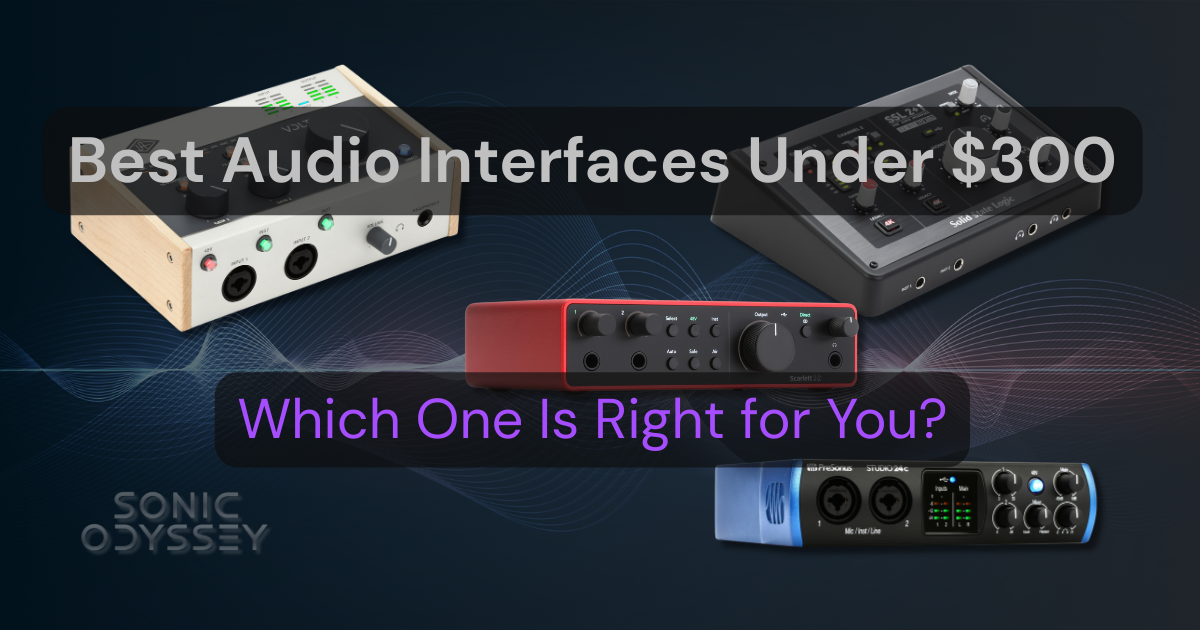
Affordable doesn’t mean amateur — these interfaces punch way above their price.
What Is a Direct Box (DI Box), and Why Do People Use Them?
A direct box (or DI box, short for direct injection) is a simple but essential tool in the world of audio recording and live sound. It converts high-impedance, unbalanced signals (like those from electric guitars, basses, keyboards, and synths) into low-impedance, balanced signals that are more suitable for mixing consoles and audio interfaces.
Why It Matters:
- Noise Reduction: Balanced signals reject interference and noise, especially over long cable runs.
- Impedance Matching: Ensures that your instrument is talking to your interface or mixer properly, with less tone loss.
- Signal Level Matching: A DI helps instruments sit better in a mix by giving you a clean, consistent signal.
If you've ever plugged a bass directly into your interface and felt like it lacked punch or clarity, a DI box could be your missing piece.
Passive vs. Active DI Boxes
Not all DI boxes are built the same — one of the biggest differences is whether they’re passive or active.
Passive DI Boxes
- Require no power (no batteries or phantom power).
- Use a transformer to do the heavy lifting.
- Great for high-output instruments like electric guitars and keyboards.
- Generally more durable and less prone to failure.
- By nature, passive DIs introduce some level attenuation — your signal will come through clean, but slightly reduced in level.
Best For: Guitars with passive pickups, synths, samplers, drum machines. (no batteries or phantom power).
Active DI Boxes
- Require power (typically 48V phantom power or batteries).
- Use active circuitry for signal conversion.
- Can boost weak signals and handle low-output sources better.
- Often offer extended frequency response and cleaner tone.
- Especially useful for long cable runs, where maintaining signal strength and clarity is critical.
Best For: Passive instruments like vintage basses, low-output guitars, or scenarios where you want maximum fidelity. (typically 48V phantom power or batteries).
Rule of Thumb:
- Passive instrument? Use an active DI.
- Active instrument? Use a passive DI.
This isn’t a hard rule, but it’s a solid starting point. Some engineers prefer active DIs across the board, especially for studio use.
Do You Actually Need a DI Box?
Maybe — and maybe not.
You Probably Do If:
- You record bass or guitar direct and feel like the tone is dull or thin.
- You’re running a synth, drum machine, or sampler into a mixer or interface and get buzz or hum.
- You play live and need long cable runs without interference.
You Might Not Need One If:
- You’re always miking amps or cabs.
- Your audio interface already has a high-quality instrument (Hi-Z) input. That said, the official Sonic Odyssey stance is to not rely on the built-in DI on your interface if you're serious about tone. We strongly recommend investing in a premium DI box — our personal choice is the Radial J48, which consistently delivers studio-quality results and pairs well with a wide range of instruments.
- You're only working in-the-box with virtual instruments.
That said, a good DI box can improve tone, reduce noise, and save you time in both studio and live scenarios.
Best DI Boxes by Budget (2025 Edition)
We’ve broken down our top picks by budget category — and yes, these are all affiliate links, so click away if you feel like supporting Sonic Odyssey while upgrading your tone.
💰 Budget (Under $50)
Behringer DI100 Ultra-DI
Solid performance for dirt cheap. Metal enclosure, ground lift, and pad switch. We're loathe to admit it's quite usable.
ART ZDirect
Basic but reliable. Decent tone preservation and a good step up from plugging direct.
💸 Midrange ($50–150)
Radial ProDI
Passive, durable, and sounds like it costs way more. A pro favorite for a reason.
Whirlwind IMP 2
Classic passive DI found in studios and clubs everywhere. Built like a tank.
sE Electronics DM3
Inline DI with serious bite. Adds up to +30 dB of clean gain, dead quiet, and built like it wants to race your ‘Cuda for pinks.
💎 Premium ($150+)
Radial JDI
Arguably the best passive DI on the market. Jensen transformer, stellar build quality.
Rupert Neve Designs RNDI
Insanely clean, yet musical. Neve tone in a direct box. It ain’t cheap, but it’s worth it.
Radial J48
This is the gold standard for active DIs and has been the Sonic Odyssey go to for many years and will be for many, many more. Radial stands by their products and builds them to last.
Other Types of DI Boxes
While most people think of DI boxes for instruments, more specialized models exist for other use cases:
- Turntables: Some DI boxes are equipped to handle phono-level signals, including RIAA equalization for proper playback tone.
- Bluetooth Receivers: Wireless DI boxes let you route audio from a phone or tablet into a mixer cleanly.
- USB Audio Sources: Need to feed audio from a laptop into a PA without hum? There’s a DI for that, too.
These niche DIs are perfect for hybrid setups — especially in churches, events, or podcast spaces that juggle a wide range of gear.
Radial Pro-USB
Plug-and-play DI for laptops and mobile rigs. Converts USB audio to balanced XLR with ground lift and isolation — perfect for DJs, live streamers, and anyone tired of noisy aux cables.
Radial BT-Pro
A rock-solid Bluetooth DI that keeps your wireless audio clean, stable, and stereo. Perfect for live events, DJ rigs, or any setup where cables just aren’t an option.
Final Thoughts
Direct boxes are one of those things you don’t know you need — until you do. Whether you’re recording bass, tracking synths, or playing live, a good DI can be the difference between a muddy mess and a mix-ready signal. Got a go-to DI box you swear by? Drop us a line on our socials — we’d love to hear what’s working for you., a good DI can be the difference between a muddy mess and a mix-ready signal.
Invest according to your needs and budget. And if you're not sure, the Radial ProDI is the no-brainer starting point.
Want more gear tips? Check out these guides!
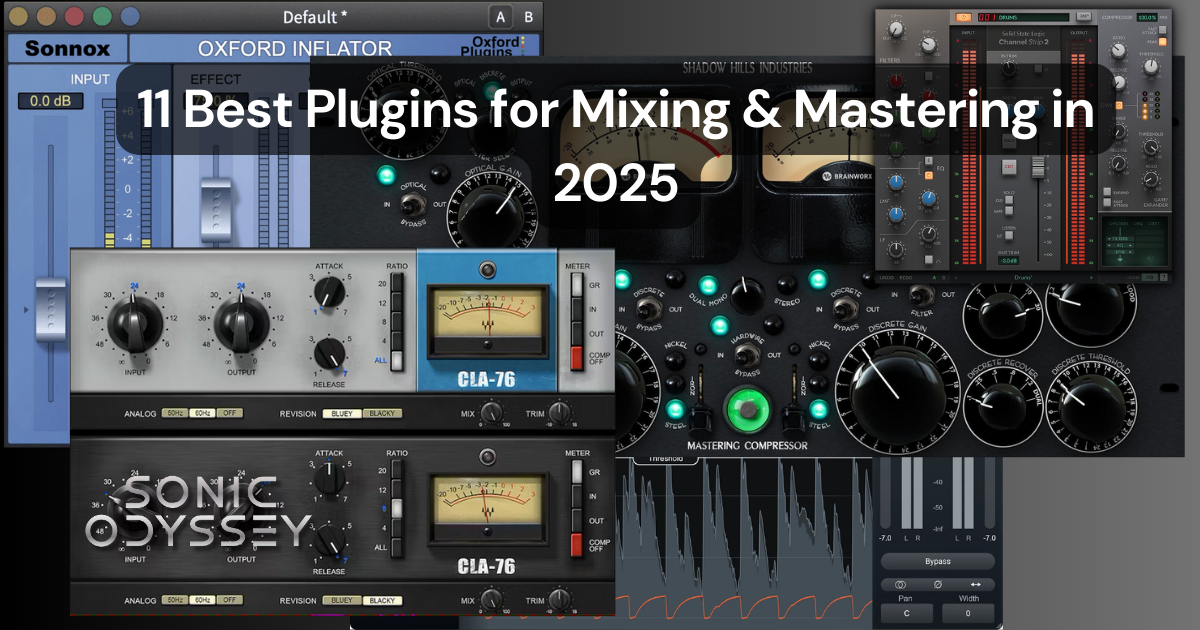
These are the plugins we actually reach for when it’s time to turn a mix from decent to dialed — no hype, just results.
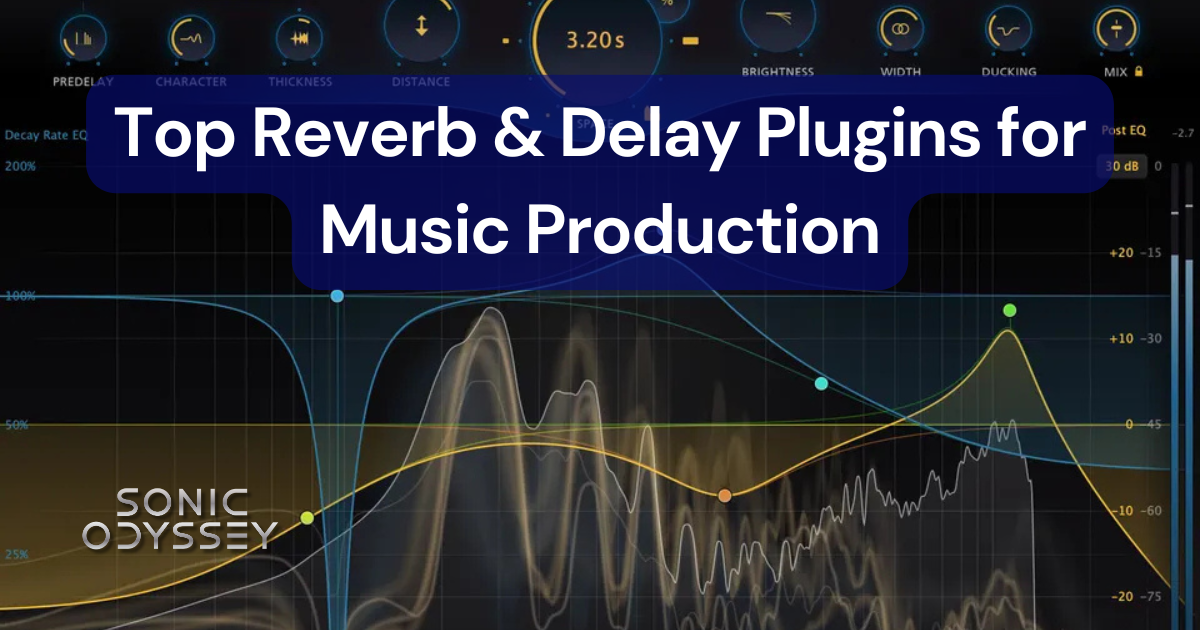
Want depth, vibe, and dimension in your mix? These reverb and delay plugins will get you there fast — no washed-out mud, just pro results.
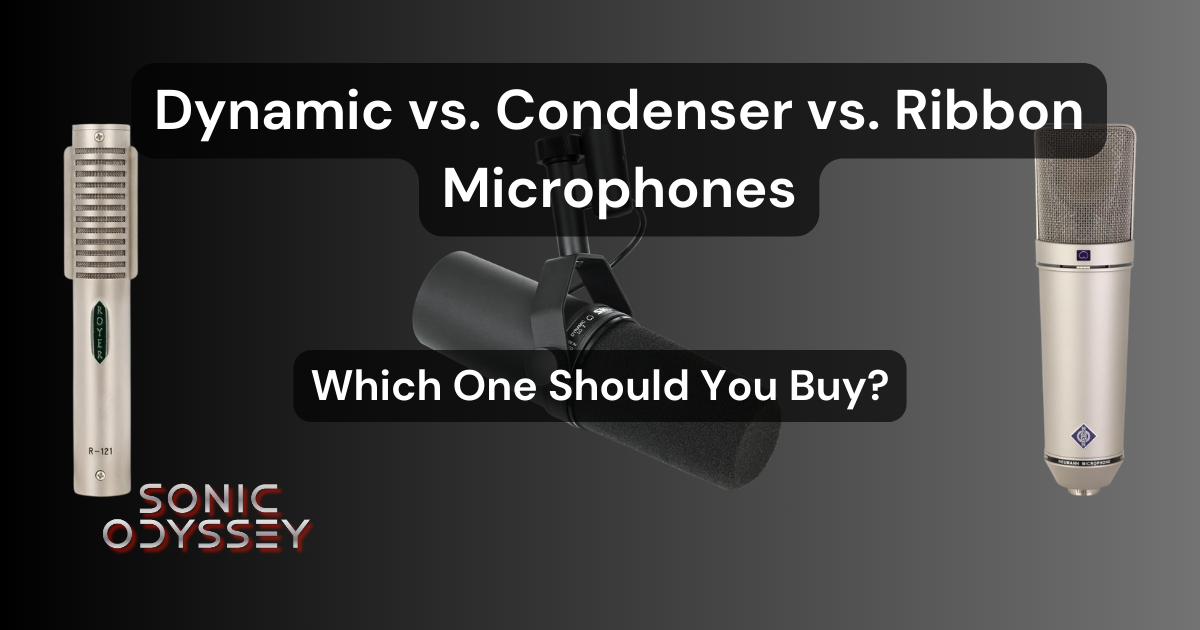
Not sure which mic type fits your setup? We break down the real-world pros, cons, and myths behind dynamic, condenser, and ribbon mics.
Affiliate Disclosure Reminder: This article contains affiliate links. If you buy something through one, we may earn a commission. It helps us keep Sonic Odyssey running (and keeps Gianni the intern stocked with string cheese).






